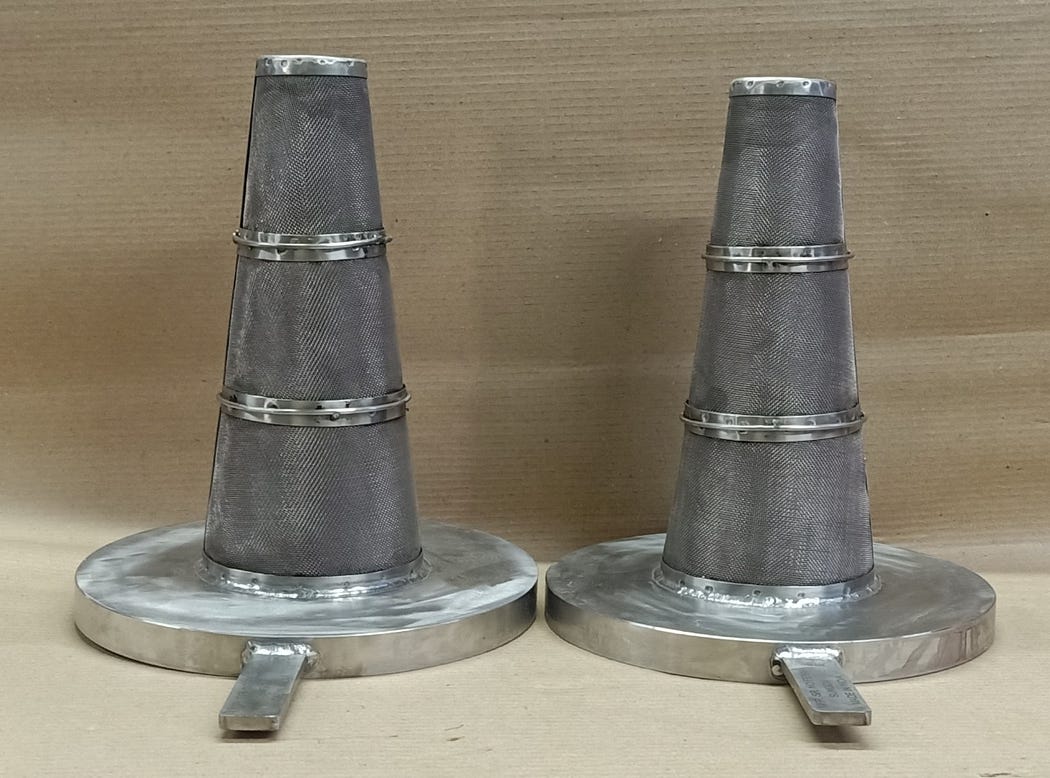Cone and Conical Strainers: Essential Filtration Tools for Steam and Fluid Systems

In the world of fluid handling and steam systems, it is very important to ensure the smooth flow and purity of process media. Let’s just say that it is a non-negotiable. That’s where strainers come in — and more specifically, cone and conical strainers. These compact yet powerful devices play a critical role in protecting pipelines, valves, pumps, and other equipment from damage caused by foreign particles.
Whether you’re running a high-pressure steam line or handling corrosive liquids, choosing the right type of strainer — be it a cone strainer, T type strainer, or flanged strainer — can make all the difference in system reliability and performance. This blog takes a deep dive into cone and conical strainers, exploring their applications, advantages, and why they’re essential for both temporary and permanent filtration needs.
``What Are Cone and Conical Strainers?
Cone and conical strainers are shaped like a cone or a truncated cone, typically installed between flanges in pipelines. They are often used as temporary strainers during system startup to catch weld slag, rust, and other debris that may have accumulated during construction or maintenance.
Cone strainers are favored for their simplicity and efficient flow characteristics. When fluid passes through the cone, debris is trapped inside while clean fluid continues downstream. Because of their shape, cone strainers provide a larger open area compared to flat strainers, allowing higher flow rates and lower pressure drops.
Where Are They Used?
Cone and conical strainers are used across a wide range of industries:
- Power plants: to protect turbines and boilers in high-temperature steam strainer applications
- Chemical processing: to prevent clogging in precision metering and mixing equipment
- Oil & Gas: for startup filtration in pipelines and separators
- Pharmaceutical and food industries: to catch unwanted particles before they affect product quality
- Water treatment: as part of pre-filtration systems to protect sensitive membranes and pumps
If your system deals with any fluid — hot or cold, corrosive or neutral — a stainless steel strainer in a conical form is often a smart first line of defense.
Key Advantages of Cone Strainers
Let’s break down why cone and conical strainers are preferred in demanding fluid systems:
1. Efficient Particle Capture
Their shape allows debris to collect without blocking the full flow path. This ensures continuous operation even with partial clogging, which is crucial in high-duty systems.
2. Low Pressure Drop
Thanks to the larger surface area compared to basket or flat strainers, cone strainers typically result in less pressure drop — ideal when maintaining pressure is vital.
3. Easy to Install and Remove
Cone strainers are generally placed between two flanges, making them easy to insert or remove during maintenance or startup checks.
4. Customizable Designs
They are available in various mesh sizes, materials, and configurations to suit different flow rates and particle sizes.
Choosing the Right Material: Why Stainless-Steel Strainers Lead the Pack

One of the most common choices for cone strainers is stainless steel, and for good reasons. Stainless steel strainers offer excellent resistance to corrosion, high temperature tolerance, and structural integrity even in extreme conditions. They’re particularly favored in steam systems and aggressive fluid applications where durability is critical.
From 304 to 316 stainless grades, you can select the right alloy based on the chemical compatibility and operating pressure/temperature of your system. Stainless steel also holds up better under frequent cleaning, another important factor in hygiene-sensitive industries like pharma and food processing.
Permanent vs Temporary: When to Use Cone Strainers
Cone strainers are primarily used as temporary strainers, especially in startup situations when it’s important to flush out residual debris. However, they’re also used in low-maintenance systems as permanent strainers, provided they are monitored and cleaned regularly.
If your application requires regular filtration over a long period, you might want to consider a T type strainer or a Y type strainer — both of which are designed for easier access and maintenance. Still, for short-term, high-flow protection, a cone strainer is often the most practical solution.
Flanged Cone Strainers: Sealing Made Simple
Some cone strainers come with flanged ends, which simplifies installation in flanged piping systems. A flanged strainer ensures better sealing, reducing the risk of leaks and making it easier to achieve proper torque without damaging the mesh.
Flanged cone strainers are especially useful in high-pressure systems or critical applications where precise alignment and robust sealing are required. They also minimize installation time, especially when compared to custom clamping or welding methods.
Choosing the Right Mesh and Size
Selecting the right mesh size is vital for optimal performance. The mesh must be fine enough to capture harmful debris but coarse enough not to choke flow. Typical mesh ranges are from 20 to 400 microns, but custom sizes are also available.
You should also consider:
- Flow rate requirements
- Particle size expected in the fluid
- System pressure and temperature
- Duration of use (temporary or permanent)
Consulting with filtration specialists or industrial strainer manufacturers can help you strike the right balance between protection and performance.
Whether you’re dealing with steam, chemicals, or process fluids, the role of a cone strainer should never be underestimated. It’s a simple, cost-effective solution that prevents significant damage, unscheduled downtimes, and performance issues in your pipeline.
Incorporating the right cone strainer, T type strainer, or flanged strainer into your system design isn’t just good practice, it’s essential engineering. And when durability is critical, stainless-steel strainers remain the gold standard for long-term efficiency and safety.
If you’re setting up a new fluid system or retrofitting an existing one, talk to experienced filtration specialists who can guide you to the right solution for your specific needs. Because in the process of filtration, precision matters — and a small strainer can save you from big problems down the line.
The location of installation of these Conical Strainers are in Brunei.
Comments
Post a Comment